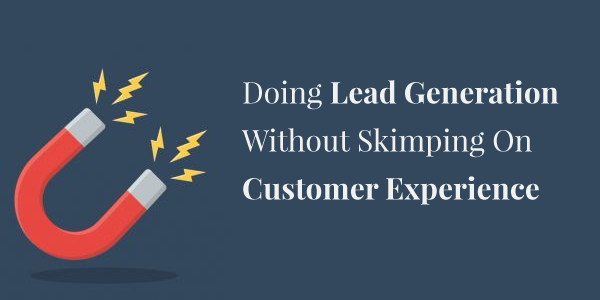Customer experience is a leading factor in today’s marketing world, and it means more than optimizing your social media and web page design. A brand culture and identity should encompass all areas of interaction, including newsletters, email, and lead generation.
Today, people would not surrender their precious information just like that in exchange for daily spam. Customers are looking for quality, content-rich data and connection. A business must make every interaction valuable if it wants to brand itself as part of a community. The future of a successful lead generation program is in providing relevant, high-quality information, understanding your audience’s buying process, and following up with customers.
Another important factor to consider concerning lead generation is the lack of communication between departments in an organization. Getting your departments to work together can make lead generation easier than you believe.
One way to fight the silo effect is to invest in sales-enabling tools, which can help your sales and marketing teams work together. Tools such as these allow each department to better succeed in their pursuits. The sales team can provide more relevant input to the content the marketing team distributes to customers and leads, which can increase sales for the sales team.
Lead Generation Tips
1. Understand Your Prospects’ Buying Process
Map Out Buying Patterns—Most potential buyers follow a degree of predictability, but their goals can change midway through a task. Social media can help you be aware of your audience’s changing wants and needs. Businesses anticipating future behavior can address unique concerns via different sales and marketing approaches. Answer questions, educate, and discuss relevant issues to encourage customers to interact more.
Tap Into Social Media Channels—You can gather valuable data from social forums that will give you insights into prospective customers. But don’t forget that this is an opportunity for prospective customers to gain insight into your business. That is why it is essential to utilize your social media platforms as an extension of customer service rather than just to sell your products or services.
Use Your Feedback – By organizing and creating a feedback loop among departments—part of defeating the silo effect—a business can avoid overlooking essential information. Address specific questions and determine what resonates with an audience. Collate data and present the most relevant information to prospects. Comment sections, reviews, and polls are reasonable means of obtaining data, but complaints and customer service shouldn’t be ignored.
Asking yourself how to streamline the buying process, what strategies are working, and what benefits people are getting from your services can help you better understand your customers and generate new leads. Consider different ways to close the customer satisfaction gap. Understanding the customer is the best means of building a business.
2. Analyze Your Results to Predict the Future
Are prospects happy with their outcomes? What went right, and what went wrong? Such questions can result in lead-generating answers. Using comments and opinions, following up, and tracking trends can steer you to a broader audience. Gear your newsletters and other customer contacts accordingly. Serve your prospects. They will appreciate it.
3. Follow-up with Tact
You should always tactfully and respectfully follow up — one of the most nurturing business components. Consider your prospective buyers’ journeys. At what point in the buying process are they? What can help them reach a decision?
Businesses can benefit from targeting follow-ups to suit their prospects’ needs. Supportive tidbits and essential news will familiarize customers with and interest them in a company. A firm can add a call to action or provide contact details to help buyers quickly obtain further information.
If the prospect has a specific concern—provide educational material. Serving as a resource is an excellent way to establish a relationship. Should prospects waver on taking action—help them discern facts and figures.
It’s not the volume of information a prospect receives that earns a company respect; it’s the quality of the information. Businesses should focus on making all of their communication worthy of attention. Companies that do their best to take their prospects where they want to go will be the ones that come out on top.

